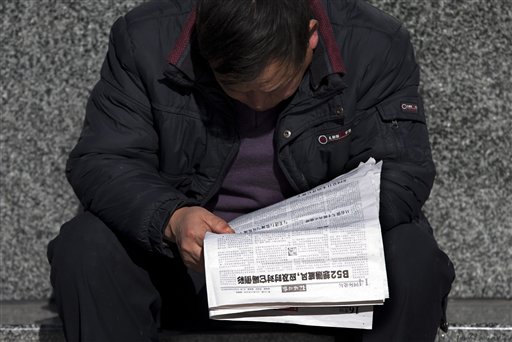By CHRISTOPHER BODEEN
Associated Press
BEIJING
China said it sent warplanes into its newly declared maritime air defense zone days after the U.S., South Korea and Japan all sent flights through the airspace in broadening defiance of rules Beijing says it has imposed over the East China Sea.
China’s air force on Thursday sent several fighter jets and an early warning aircraft on normal air patrols in the zone, the Xinhua agency reported, citing air force spokesman Shen Jinke.
The report did not specify exactly when the flights were sent or whether they had encountered foreign military aircraft. The United States, Japan and South Korea have said they have sent military or coast guard flights through the zone without encountering any Chinese response since Beijing announced its creation last week.
Shen described Thursday’s flights as “a defensive measure and in line with international common practices.” He said China’s air force would remain on high alert and will take measures to protect the country’s airspace. Chinese officials have said commercial flights are unaffected by the new rules.
While China’s surprise announcement last week announcing the zone initially raised some tensions in the region, analysts say Beijing’s motive is not to trigger an aerial confrontation but is a more long-term strategy to solidify claims to disputed territory by simply marking the area as its own.
China’s lack of efforts to stop the foreign flights _ including two U.S. B-52s that flew through the zone on Tuesday _ has been an embarrassment for Beijing. Even some Chinese state media outlets suggested Thursday that Beijing may have mishandled the episodes.
Without prior notice, Beijing began demanding Saturday that passing aircraft identify themselves and accept Chinese instructions or face consequences in an East China Sea zone that overlaps a similar air defense identification zone overseen by Japan since 1969 and initially part of one set up by the U.S. military.
But when tested just days later by U.S. B-52 flights _ with Washington saying it made no effort to comply with China’s rules, and would not do so in the future _ Beijing merely noted, belatedly, that it had seen the flights and taken no further action.
South Korea’s military said Thursday its planes flew through the zone this week without informing China and with no apparent interference. Japan also said its planes have been continuing to fly through it after the Chinese announcement, while the Philippines, locked in an increasingly bitter dispute with Beijing over South China Sea islands, said it also was rejecting China’s declaration.
Analysts question China’s technical ability to enforce the zone due to a shortage of early warning radar aircraft and in-flight refueling capability. However, many believe that China has a long-term plan to win recognition for the zone with a gradual ratcheting-up of warnings and possibly also eventual enforcement action.
That may wear down Japan and effectively change the status quo, she said.
The zone covers an area spanning about 1,000 kilometers (620 miles) from north to south, above international waters separating China, South Korea, Japan and Taiwan. Alliance partners the U.S. and Japan together have hundreds of military aircraft in the immediate vicinity.
Japanese commercial flights have continued to pass through the zone, en route to destinations including Taiwan, Vietnam and Hong Kong. They initially had notified Chinese authorities of their flights as requested, until early this week, when the Japanese government urged them to stop doing so.
The zone is seen primarily as China’s latest bid to bolster its claim over a string of uninhabited Japanese-controlled islands in the East China Sea _ known as Senkaku in Japan and Diaoyu in China. Beijing has been ratcheting up its sovereignty claims since Tokyo’s nationalization of the islands last year.
The announcement comes an awkward time. Although Beijing’s ties with Tokyo are at rock bottom, it was building good will and mutual trust with Washington following a pair of successful meetings between President Barack Obama and Chinese President Xi Jinping. However, the zone feud now threatens to overshadow both the visit by Vice President Joe Biden to Beijing next week and one by Australian Foreign Minister Julie Bishop expected before the end of the year.
China will continue piling the pressure on Tokyo until it reverses the decision to nationalize the islands, concedes they are in dispute, and opens up negotiations with Beijing, said Shen Dingli, a regional security expert and director of the Center for American Studies at Shanghai’s Fudan University.

COMMENTS
Please let us know if you're having issues with commenting.